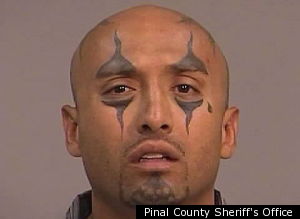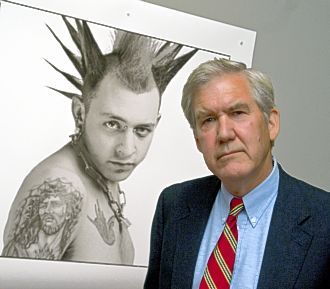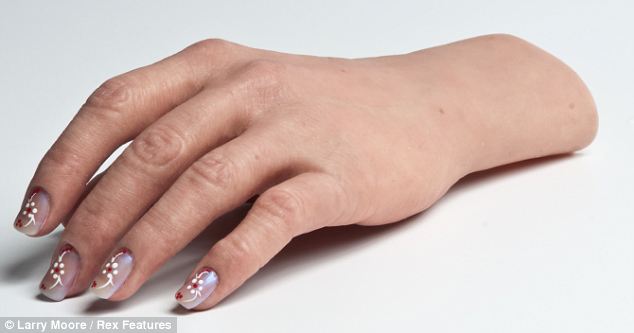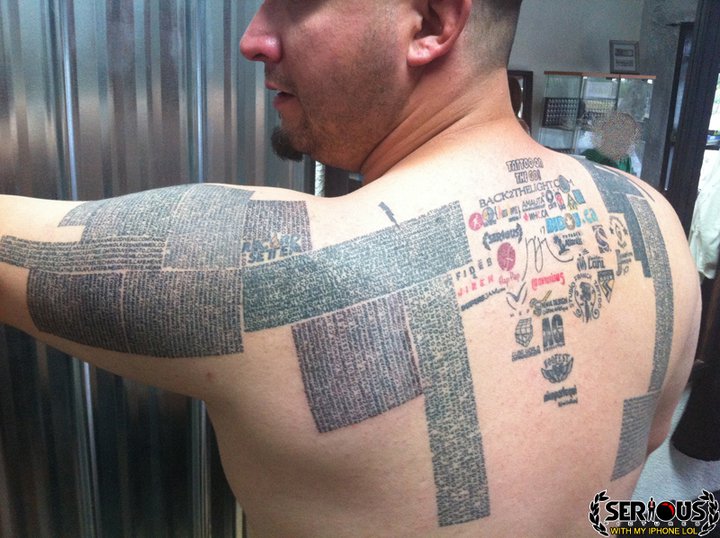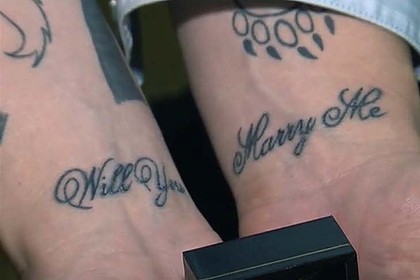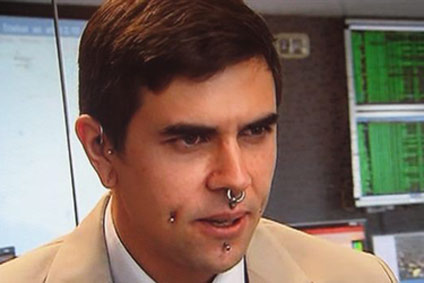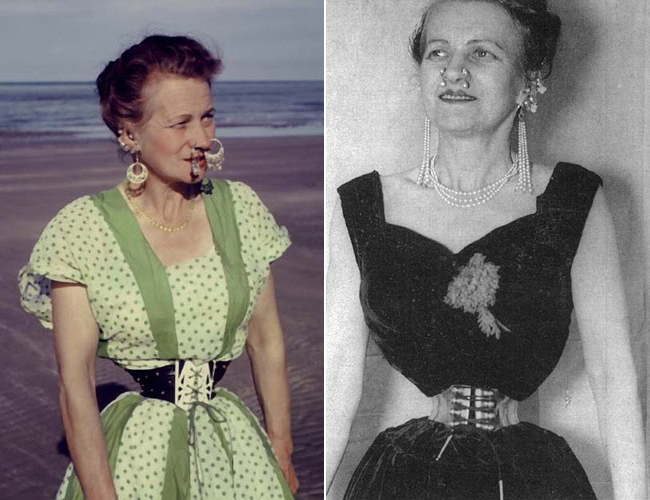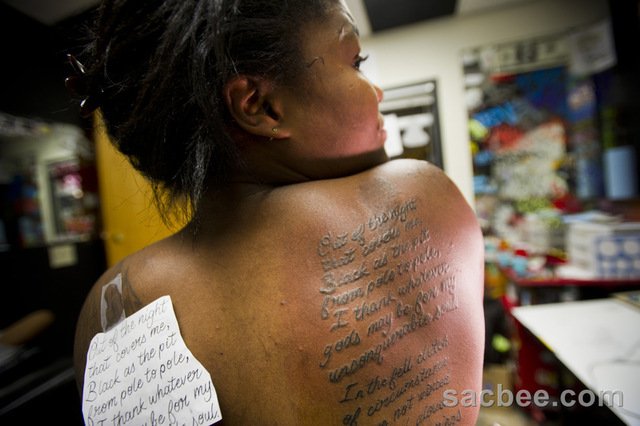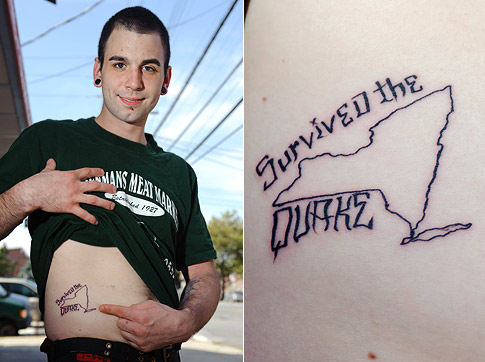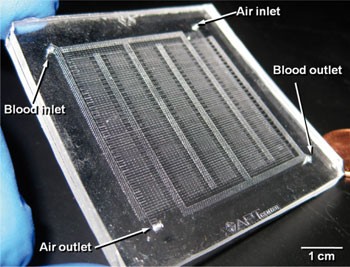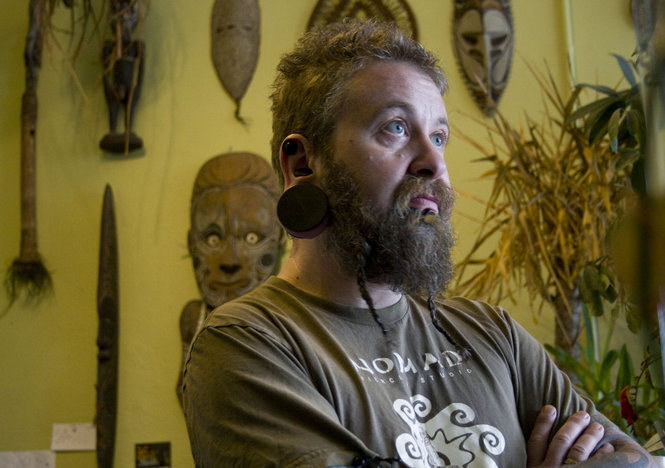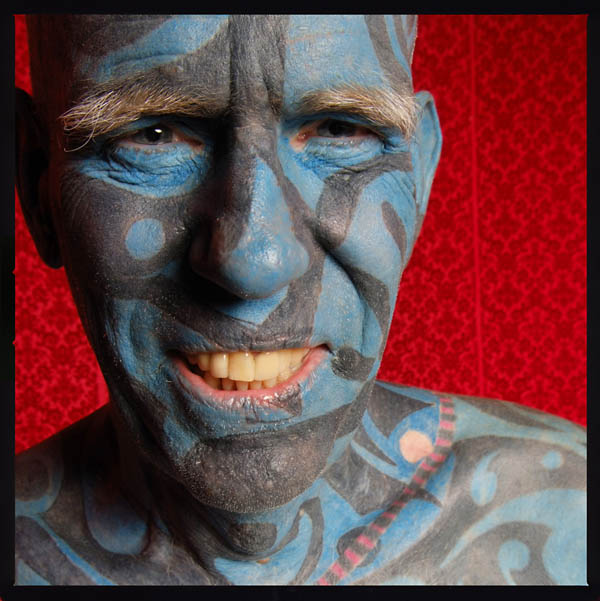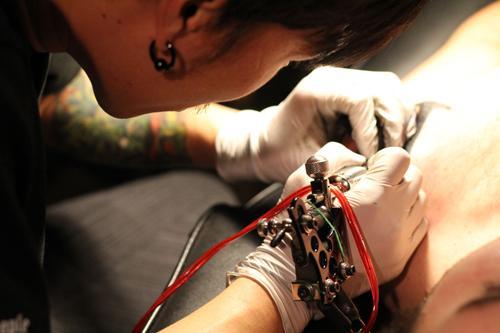It’s time again for the news, but before I start I just want to wish a happy thanksgiving to my fellow Canadians. This week’s news is back to the normal size thanks mostly to the many links that were sent my way. As always, if you come across a story you think should be included, just send me the link in an e-mail.
To get things started is a pretty significant story out of Delaware County, PA. Within the next 2 week, if a law is passed, it will become illegal for anyone other than a doctor to perform anything they consider an extreme modification. This includes everything ranging from scarification and branding to full penectomies. It also includes all types of suspension, which will force any suspension teams in Delaware County to stop completely, move out of state, or break the law.
Delaware County residents planning to have extreme body modification — including tongue-splitting, castration or penectomy — done at a lo cal tattoo parlor had better have it done in the next two weeks. The Delaware County commissioners on Monday approved the first reading of a new, tougher tattoo and body piercing ordinance that included procedures that local health officials maintain are more suited for a medical office than a tattoo parlor. A final vote on the ordinance — proposed by the county health department — could come as early as the commissioners’ Oct. 17 meeting.
Noting that the county’s 1998 tattoo and body piercing ordinance was one of the first in the state, heath department administrator Joshua Williams said the revised ordinance adds “prohibited” acts that are actually surgical and medical procedures. They include branding and skin peeling as well as other forms of scarification, tongue splitting, suspension piercing — in which a person is suspended by hooks — and nullification, which includes the voluntary removal of body parts. “Most commonly, this means castration (and sometimes penectomy) amputation of fingers or toes or, in extreme cases, removal of full limbs,” according to the ordinance. “It’s trending farther from tattoo and heading to medical procedures,” Williams told the commissioners.
County Attorney Jack Quirk questioned how often nullification, for example, was requested. Health department inspector Christiana Mann replied that the actions covered in the ordinance are offered and “happening” in Delaware County.The commissioners approved the first reading of the ordinance.Sean Gillespie, manager of Dragon Slayer Tattoo and Body Modification, said extreme body modification sometimes happens but is not a big part of his shop’s business. “As far as the ordinance that’s in effect right now, we like it and don’t have a problem with it,” Gillespie said.
At Collins Classic Ink, Miniear said he had “heard through the grapevine” that the county was considering a new ordinance. “I’ve been practicing scarification for five years,” he said. “It’s not a high market. I don’t understand why it’s become a problem.” Miniear said he has done suspension piercing performances in the past. “It’s more of a spiritual thing for me and a lot of people I know,” he said. “It’s not just a shock value thing.”
So Delaware ModBlog readers, let those around you know that this is being considered by the county. In order for this to be stopped the state needs to be aware of how this will negatively impact the Delaware modified and suspension communities.
More news to come including a celebrity story that had me laughing so hard I had to break my own rule about posting celebrity crap.
Before we get to the celebrity news I just mentioned, there’s a lot of real news to cover first.
This week brings us yet another member of the “Don’t commit a crime if you have a distinctive facial tattoo” club. This past week, convicted sex offender Michael Campbell was picked up for violating his parole by getting within 500 feet of a public swimming pool. The reason he got caught? He’s pretty easy to spot in a crowd.
Greene County, Missouri, deputies arrested a very unusual looking suspect over the weekend. They arrested Michael Campbell, 36, a Colorado native and convicted sex offender. Deputies say he was busted for coming within 500 feet of a playground or public pool. Campbell was booked into the county lockup Sunday and later released.
Campbell’s face and neck are completely covered in tattoos. The art includes tattoos of Frankenstein, a spider and a bow tie. Previous mugshots from 2003 show only a couple of tattoos on his face.
Of course just because someone has facial tattoos it doesn’t make them a bad person. But to this day people are discriminated against. Even in New Zealand, where having a Ta Moko is part of the cultural history of the country, people still get discriminated against. Just last week a bar in Christchurch asked a man to leave because of his facial tattoos.
On Saturday, Tunahau Kohu went to the Inwoods Rd bar with his partner.
He said he was approached by a staff member as he sat down to watch Australia play Russia in a Rugby World Cup match at 3.30pm and told to leave because the business did not allow people with facial and neck tattoos in the bar. Ta moko is a traditional Maori tattoo – a visual language that connects the wearers to their whakapapa (genealogy).
Kohu said he had bought a drink and played the gaming machines before the game. ”They said it is their policy that they don’t allow people with facial tattoos. I tried to explain that my moko isn’t a facial tattoo. Every line and circle has a meaning to it,” he said. ”They said if I didn’t leave they would ring the police. They weren’t interested in my explanation of what it meant.”
Claims of racial discrimination were soon posted on the bar’s Facebook page. Forsdick told The Press the after the bar’s recent refurbishment, he and owner Louis Vieceli had tightened the dress code, meaning nobody with facial or neck tattoos would be allowed in the premises. “Two or three people with facial tattoos were also asked to leave” the premises on Saturday, he said. ”This is not a racial issue. This is about making our premises and our environment be one that is welcoming for all clientele.” Forsdick said the incident prompted some regular customers to leave, and Kohu did not explain the significance of his moko. Had Kohu made that clear ”we would have taken that into consideration”, Forsdick said.
This afternoon, before watching media, Forsdick shook Kohu’s hand and said he was welcome back though the bar’s policy on tattoos remained.
However, Kohu later said that despite accepting the apology, “I don’t think he deserved my handshake”. “I wish I didn’t give it now.” NZ Hospitality Association chief executive Bruce Robertson said bars were entitled to eject “anyone they wish” as long as their decision was not based on ethnicity, gender or disability. This would breach the Human Rights Act. Asked if mokos should be treated in the same way as other facial tattoos, Robertson said it depended on the moko. “It depends on the nature of the moko, its authenticity and whether there were other issues involved.” He added he did not know enough about this incident to comment specifically. The Human Rights Commission confirmed it had received a complaint about the incident.
I’m sorry, I’m not from New Zealand but even I know that a Moko isn’t just a random facial tattoo. Unless there’s some element I’m missing out I would assume that most New Zealanders would know that.
Moving on, the Android app marketplace came under fire earlier this week for selling an app entitled “Is my son gay?“ The app asked a series of 20 questions, one of which was “Does he piercings in his tongue, nose or ears?”. Because you know, if you have piercings, that must mean you’re gay. After a number of complaints were made, the app was removed from the store.
When it comes to sports there isn’t normally a lot of body modification related stories, well this week 2 different articles focused on athletes that are visibly modified, and both were very positive. In the first article pitcher Ryan Roberts from the Arizona Diamondbacks was interviewed by Yahoo Sports.
Ryan Roberts of the Arizona Diamondbacks said he appreciates when people ask him about his many, many tattoos. The subject never gets boring to him — which is fortunate, because he is covered from neck to toe in ink, his nickname is “Tatman” and he fields lots of questions about all of it.
“I can’t say they shouldn’t [ask],” Roberts told Big League Stew. “When I first started getting tattoos, I never expected to get a lot. Over the course of my life, everything started happening for a reason. If people want to know why, I’ll definitely explain the reasons behind them. If someone’s interested, I’m honored to tell them.”
Roberts, who turned 31 in September, said he gets tattoos in order to show what inspires him: his Christian religion, as it relates to family and his other life experiences, including baseball. The first tats others probably notice are the Japanese characters for “family” on the left side of his neck. And there’s a whole lot more where that came from.
If you check out some of the other photos in the article one of them looks like he may have a scarification piece on his ribs, although it could just be white ink.
The second story is from ESPN and features roller derby star Suzy Hotrod. She was one of a number of athletes chosen for 2011′s “Bodies We Want” feature. Tara e-mailed me the link to this story and had this to say:
ESPN’s “Bodies We Want” issue came out today. The idea behind the gallery is to showcase the human athletic form, not nakedness, but the two seem to come hand in hand. In the middle of the gallery there’s a photo of Roller Derby’s own Suzy Hotrod – full colour, with ink. Being a derby player myself, I wanted to share the story – but I also think it’s amazing that with 20ish naked people in a row, she was the only one with immediately visible modifications.
Unfortunately ESPN uses flash so in order to see the photos and read what they had to write you’ll have to head on over to the site.Alright, it’s time to bring back (hopefully just for this week) the celebrity round-up. My apologies in advance, but this was too funny not to share.
Pop star Ke$ha has apologized to rocker pal Andrew W.K. after her attempt to tattoo him resulted in an infection.
The rocker recently invited Ke$ha to try out her skin art skills on him, but he was left requiring medical attention when the ink effort turned bad. He told Spinner.com, “It got infected. It’s an unfortunate aftermath and my body ended up rejecting the ink and I had to go to the doctor. But it actually left a nice scar which was, in fact, cooler than the tattoo that’s in the exact shape of the tattoo.”
Now Ke$ha has offered up an apology of sorts on Twitter.com – although she insists it wasn’t her fault. Addressing the tattoo mishap in a tweet on Wednesday, she writes, “Not my fault. His safety pin. His pen. But at least it looks cool. Party.
So you see, it wasn’t her fault he got an infection from her because she used his pen and safety pin when she tattooed him. To be fair, it was his fault he asked a pop singer with an unpronounceable name to jab him with a pin when they were both drunk after a show.
Well that’s it for this week’s news. I am going to leave you with a couple of things to enjoy over the weekend. First is a photo gallery from this year’s vegetarian festival in Phuket, Thailand.
And finally here is the first in a series of three videos by Dabe Alan and Tony Touch. The videos are all stop motion of the sleeve that Tony is tattooing on Dabe. Watch the related videos for the other parts.
Have a great weekend everyone!




